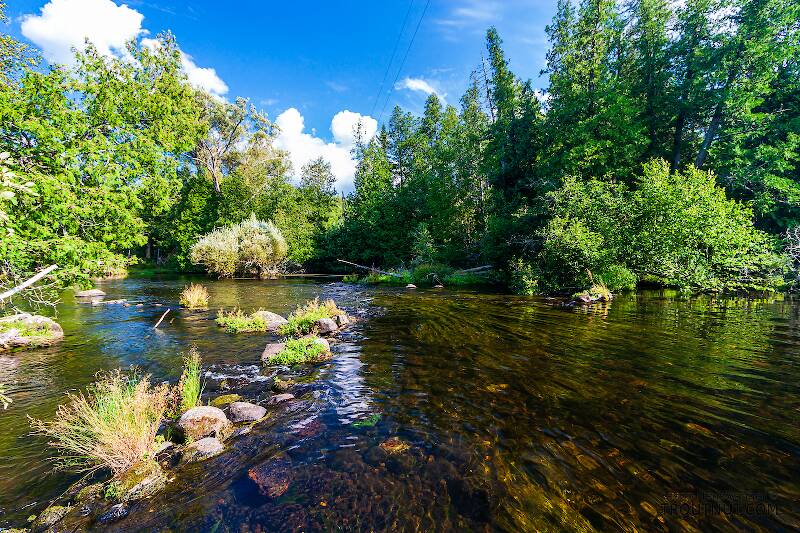
Salmonflies
Pteronarcys californica
The giant Salmonflies of the Western mountains are legendary for their proclivity to elicit consistent dry-fly action and ferocious strikes.
Featured on the forum

I caught this tiny larva without a case, but it seems to key pretty clearly to to Glossosomatidae. From there, the lack of sclerites on the mesonotum points to either Glossosoma or Anagapetus. Although it's difficult to see in a 2D image from the microscope, it's pretty clear in the live 3D view that the pronotum is only excised about 1/3 of its length to accommodate the forecoxa, not 2/3, which points to Glossosoma at Couplet 5 of the Key to Genera of Glossosomatidae Larvae.

Troutnut is a project started in 2003 by salmonid ecologist Jason "Troutnut" Neuswanger to help anglers and
fly tyers unabashedly embrace the entomological side of the sport. Learn more about Troutnut or
support the project for an enhanced experience here.
Caddisfly Genus Ptilostomis (Giant Rusty Sedges)
The most important species are Ptilostomis ocellifera and Ptilostomis semifasciata, which may often be found together producing fishable hatches at night. They are very large insects and hefty nocturnal brown trout may feed on their pupae.
Genus Range
Larva & pupa biology
Current speed: Slow or still
Substrate: Vegetation is preferred but not required
Start a Discussion of Ptilostomis
References
- LaFontaine, Gary. 1981. Caddisflies. The Lyons Press.
- Swisher, Doug and Carl Richards. 2000. Selective Trout. The Lyons Press.
Caddisfly Genus Ptilostomis (Giant Rusty Sedges)
Taxonomy
Species in Ptilostomis: Ptilostomis ocellifera, Ptilostomis semifasciata
3 species (Ptilostomis angustipennis, Ptilostomis dubitans, and Ptilostomis postica) aren't included.

